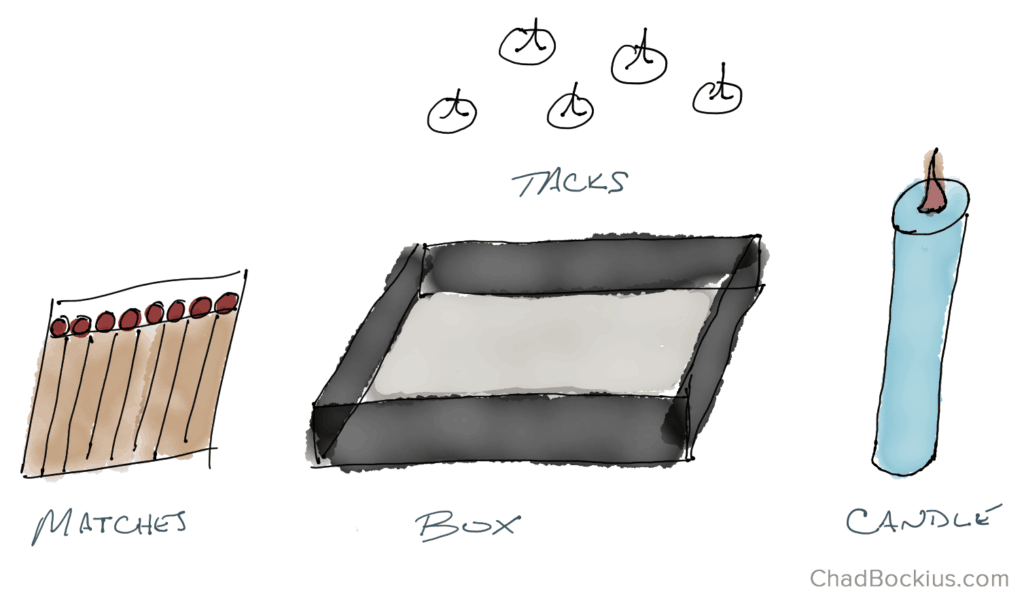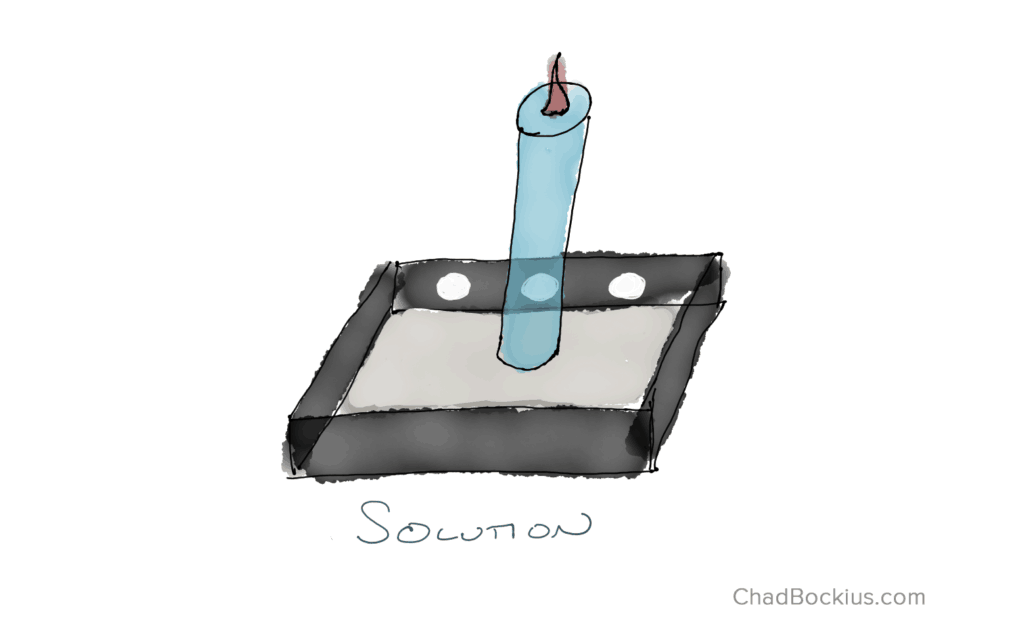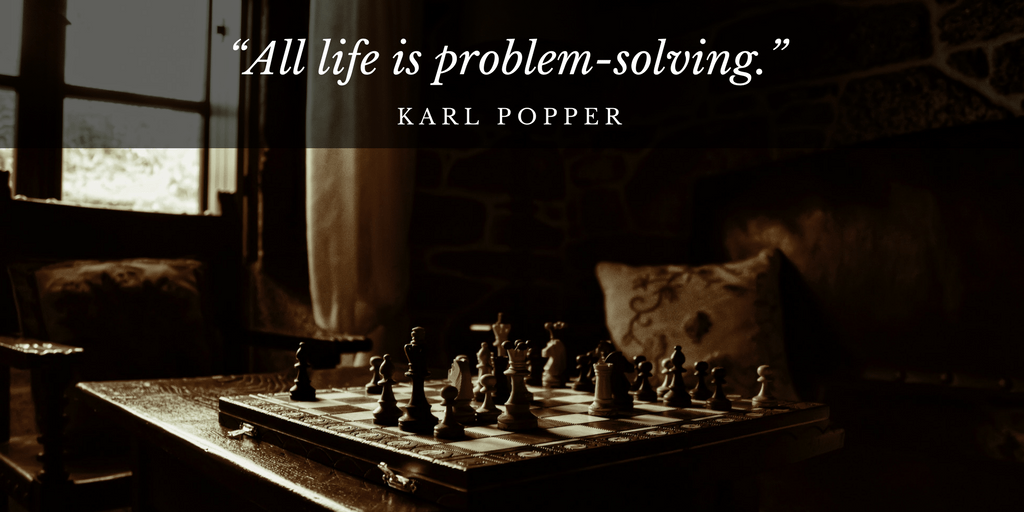Life is like a game of chess. There is an infinite number of ways to play. It’s possible to become a master but still, have room to grow. At the core, the game is about problem-solving. To be great at chess one needs to see patterns, think ahead, use logic, be creative, fail, and learn. Every move in the game is a chance to solve a problem.
This is what life feels like to me. There are thousands of moves and problems around every corner. Some are small while others seem insurmountable. I’m not in control of the issues that come my way, but I can control my response.
Often life’s problems seem overwhelming. It’s like the beginning of a chess game. There are only 32 pieces on the board, but there are over 300 Billion ways to play them in the first four moves.
When I started playing chess, I had no idea what I was doing. I struggled with every move, even the first one. Over time I began to learn a few strategies and see patterns of my own. These helped me become a better and faster player. What used to be a problem that took a few minutes to solve, now took seconds.
Problem-solving, like chess, is a skill. It’s something I can get better at over time. Every time I tackle a new problem I am improving my ability to solve one down the road.
Don’t think for a second I got it right all the time. Sure, I’ve tackled some hairy problems in my life and even came up with some good solutions. But, I always learned more from my screw ups.
I could look back and ask myself “why didn’t that work?” Did I think through all the information or were my assumptions wrong? Finding mistakes is one of the best ways I’ve found to improve my problem-solving skills.
Problems are like mutants in a fantasy movie. They always seem to evolve and get more powerful. The patterns used against a problem yesterday may not work today. After getting good at solving one type, new issues come around the bend to test every skill we have.
The only answer is to get better.
Find solutions, not problems
“Complaining about a problem without proposing a solution is called whining.” Teddy Roosevelt
When I was young, I was quick to bring my issues to my family, teachers or friends. Why go through the work of solving them if someone else will step in and help out?
The problem with this early approach is that nine times out of ten I could have solved the problem myself. Every time someone did the work for me, I missed a chance to learn.
As I got older, I realized I had to work as hard at solving problems as I did on finding them. The more I did that, the more I realized how much joy I got from cracking the code on some tough ones.
In my professional life, I’ve been an intern, a CEO and everything between the two. With each move up the corporate ladder, there were fewer and fewer people to solve the hard problems.
Few issues start in the CEO’s office, but a lot end up there. The reason is simple. Someone in the company couldn’t figure out a solution. This happens at every level of an organization. Tons of problems end up in a manager’s lap because the team couldn’t solve them.
In any company, there are two types of employees. They are either problem finders or problem solvers. This second group goes by a lot of other names, fixers, resourceful, go-to-person or troubleshooter. The second group only has one name, whiners.
Problems are easy to come up, solutions are hard. I’ve found that it’s almost impossible to find a solution when I fixate on the issue. The mind can only focus on one or the other.
In life, those that find problems and offer solutions always seem to win. These people get more responsibility, opportunities and pay.
The best way I know to do this is to accept the problem and then start to focus on solutions. There is an answer somewhere, and the sooner I start looking for it, the sooner I can find it.
Avoid negative thinking
“If you can solve your problem, then what is the need of worrying? If you cannot solve it, then what is the use of worrying?” Shantideva
I’ve never been able to solve a hard problem when I start with negative thoughts. If I say to myself “there is no solution,” I’ll never find one. If I say “this won’t work,” I’ll never pursue that angle. If I say to myself “I’m out of ideas,” I won’t come up with any new ones.
Negative thinking will defeat any problem solver before they even begin. It’s a waste of energy and time.
Part of the reason negativity creeps in is our fear of failure. Here’s the thing, failing to solve the problem is a failure. In my mind it’s always better to try to resolve the issue and fail, then never try at all.
Sure the solution may not work. If it fails, I’m still in a better place. I learned something new, and I can apply my knowledge to the next big problem I face. If it works, I continue to build my reputation of being the “go-to-guy” for big issues. I win either way.
Rethink boundaries
“Creativity involves breaking out of established patterns to look at things in a different way.” Edward de Bono
Let’s take a test. It’s called the Duncker’s candle problem and measures our ability to solve problems. Using a book of matches, a box of tacks and a candle, can you hang the candle on the wall so the wax won’t drip on the floor?

Most people get stumped. That’s OK. Part of the problem is how we think about the supplies. Do we have a box of tacks or do we have a box AND tacks? Think about the problem one more time but look at this picture instead.

How did you do? I bet you found the solution. If you didn’t, that’s OK too. Problem-solving is a skill. It gets better with practice and time. Here is the answer.

Using the tacks to hang the box on the wall is the trick. When we think of a box of tacks, we see a single thing. Often breaking a problem down into its parts helps us find creative answers.
There is a fancy term for this. It’s called first principle thinking. Aristotle defined it as “the first basis from which a thing is known.”
Scientists are great at this. They don’t assume anything. Their job is to question everything until they can show that it is true. It takes constant questioning about what we see, what we believe and what we think is the truth.
The idea is to take everything apart until we have the individual pieces. Once finished it opens up our minds to new ways things can go together.
Work backward
Read the following sentence carefully.
We still have a lot to learn about one of the most amazing tools in the the human race, the brain.
Notice anything?
Try it now.
Brain the race human the the in tools amazing most the of one about learn to lot a have still we.
I bet you saw it this time. There is an extra “the.”
Our brains are amazing, but sometimes they ignore the obvious. When reading the sentence backward, our minds slow down. We start to see things we didn’t see before. Why? Because there are no patterns. We don’t read sentences backward so the brain can’t take a shortcut to understand the content.
A great way to solve any problem is to start at the end and work backward. Thinking in reverse gives our brains a chance to see things we otherwise would have missed.
Be Socratic
“Judge a man by his questions rather than his answers.” Voltaire
I’ve always said that engineering taught me one thing, how to solve problems. I can see now how this is only partially true. While I learned a lot about analytical thinking, there were some big gaps. For example, I never learned Socratic questioning.
Looking back, I can only imagine the solutions I would have discovered if I had this skill. Socratic questioning fuels critical thinking.
R.W. Paul describes six types of questions. Regardless of the problem, these questions can help me come up with better solutions.
- Get clear about the situation: Ask, why do you say that or how does this relate to our discussion
- Test assumptions to find facts: Ask, what could we assume instead? How can you verify or disapprove an assumption?
- Find examples of truth: Ask, what would be an example? What is this like? What do you think causes that to happen?
- Look at the problem from a different angle: Ask, what would be an alternative? What is another way to look at it? Can you explain why it is necessary or beneficial, and who benefits?
- Think about the results of actions: Ask, What are the consequences of that assumption? What are you implying? How does X affect Y?
- Question the question: What was the point of this question? What does X mean?
Connect the dots
“One good analogy is worth three hours of discussion” Dudley Malone
An analogy suggests something similar between two different things. For example, a toe is to a foot, as a finger is to a hand.
Analogies are powerful for problem-solving because it broadens our thinking. These comparisons help us see connections that we might otherwise miss.
Leonardi Davinci was famous for this. He studied how water moved in rivers to better understand how blood flows through our veins. He dissected humans to understand how layers of muscle, tissue, and tendons work inside our body. This knowledge allowed him to paint details that no other painter considered at the time.
Summary
In life, and across this world, the problems we all face are only going to get worse. Now’s the time to improve our problem-solving skills. We are all going to need creative solutions to tough problems. I for one look forward to the solutions you will find.
This post is part of a series of letters to my kids. My goal is to reflect on and capture as many life lessons as possible. Here is the current list I am working from.




Beautiful article